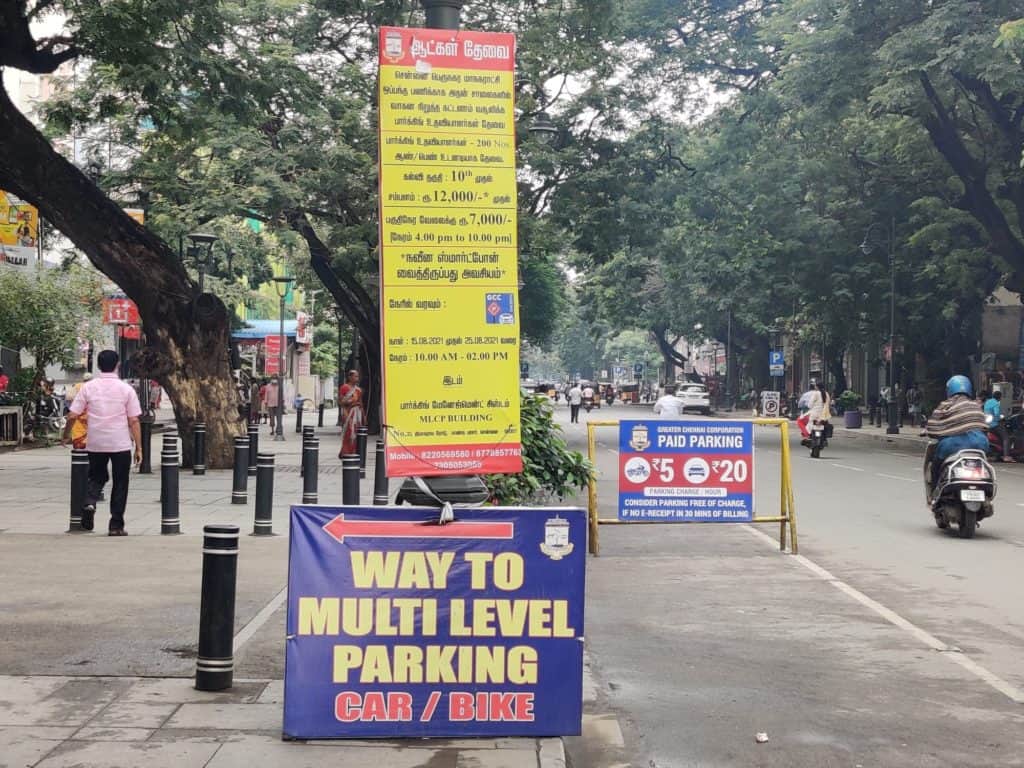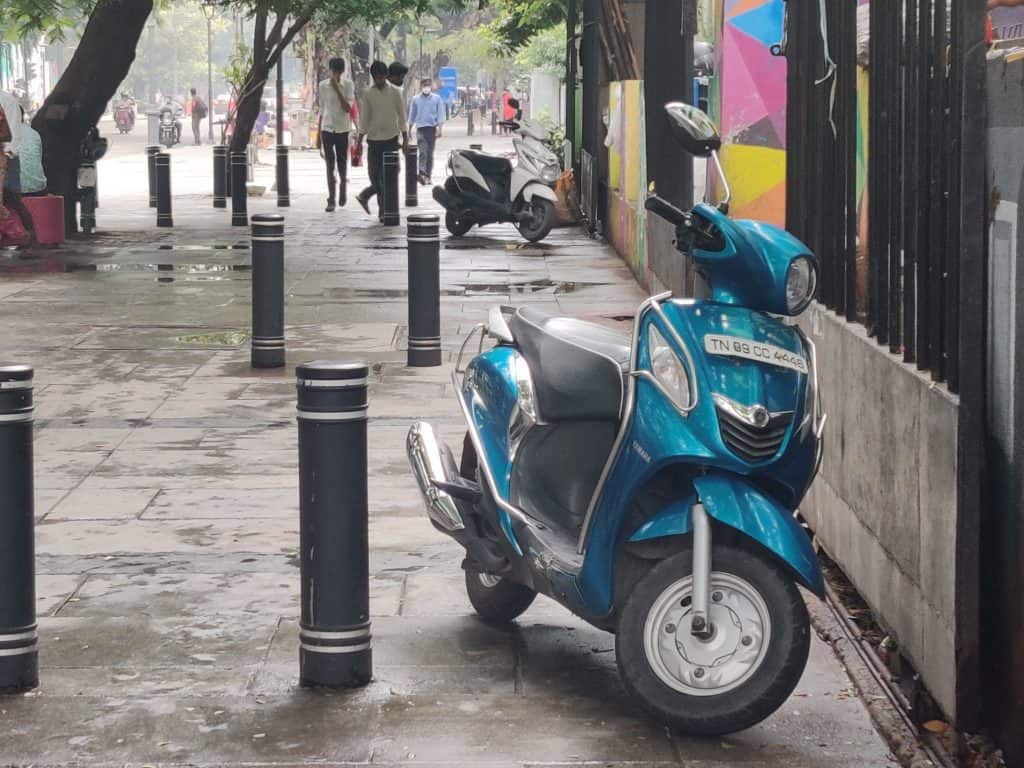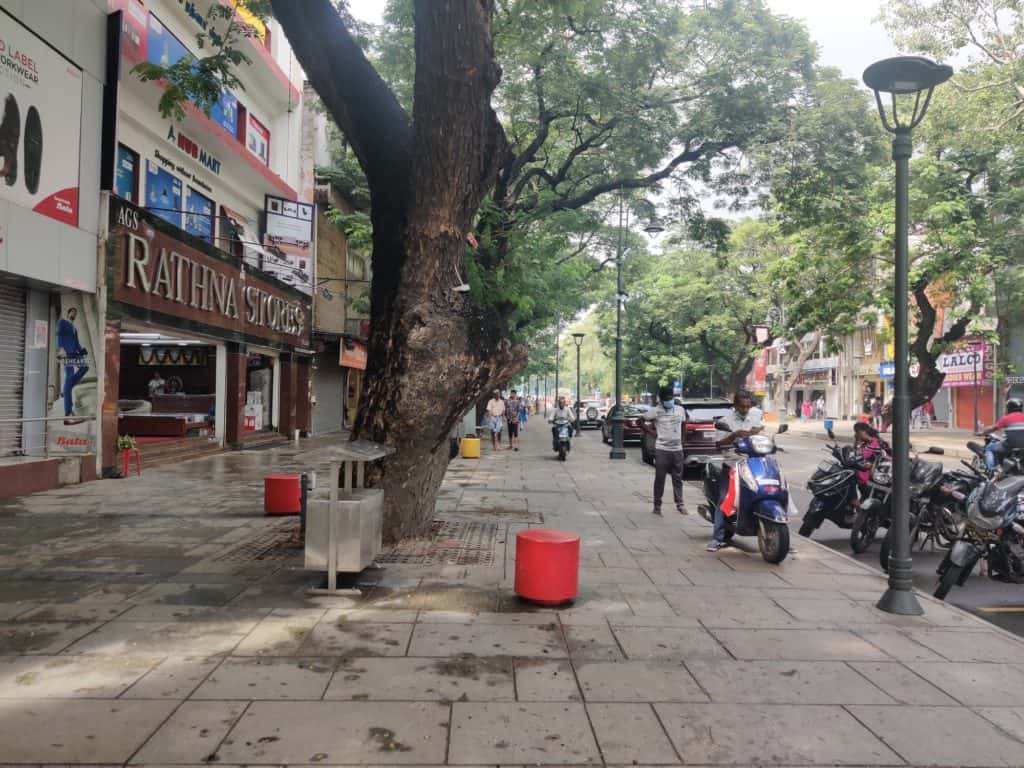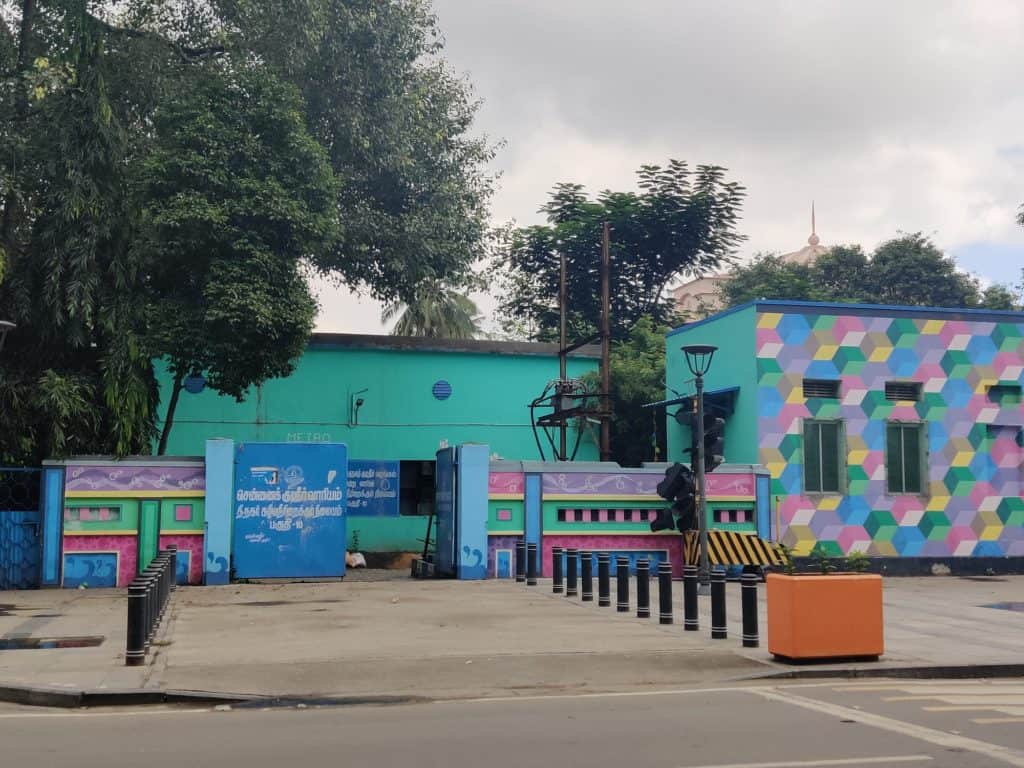In November 2019, the erstwhile chief minister of Tamil Nadu inaugurated a pedestrian plaza in T Nagar’s shopping area of Pondy Bazaar with much fanfare and promise. The project, under the Chennai Smart City Mission, was designed to give priority to pedestrians over the rush of vehicles that usually dominated the streets. Along with this came the promise of clean streets and better parking facilities. Of course, it also implied that there would be no inconvenience caused to the residents in surrounding areas. However, almost two years into the project, many issues which were initially thought of as teething troubles, still remain.
Parking a major menace at the Pedestrian Plaza
When the Plaza was first envisioned, no vehicles were to be allowed on the street. But soon, with requests from vendors and shopkeepers in the area, the street was made one-way for vehicles to pass through. Along with this, some spots were designated for on-street parking for two-wheelers and cars.
The planners presumably pinned hopes on people embracing a large multi-level parking facility that was being built at the beginning of the street. But even after the parking facility’s inauguration, very few cars and two wheelers are parked there. Despite crores being spent on the parking facility, little has been done to ensure that people use it.
Cars and two-wheelers are still parked on the on-street parking right outside shops. Customers and visitors prefer the convenience of this over walking after parking at the multi-level parking facility. Double parking of vehicles has become a common sight. This makes the one-way traffic lanes even narrower, leading to traffic bottlenecks. This situation is worse on festive days when the area sees many shoppers. On the pedestrian plaza itself, it has become a common sight to see two-wheeler riders riding on the pavement to beat the traffic jams.
Read more: 2013-2020 and looking ahead: How Chennai is trying to reclaim its streets for the people
Maintenance issues on Pedestrian Plaza
Despite being relatively new, the structures on the pedestrian plaza suffer from poor maintenance. The tiles of some sections of the pavement are already broken or uneven. This is a hazard to those who walk there, especially the elderly and children. In the absence of the use of anti-skid tiles, rainy days make the pavement extremely slippery for walkers.
Homelessness not addressed
While the plaza was in the works, the residents of the area hoped that the issue of shelter would also be addressed simultaneously. Many homeless individuals used the pavements of Pondy Bazaar at night, and redesign of the area to serve the intended purpose of pedestrianisation required a suitable alternative for these people.
But the pavements are still used as living spaces by the homeless, which also entails unpleasant instances of open defecation along the pavement. With the rainy season imminent, an arrangement must be made for their shelter; this is also important to minimise the risks from the pandemic.
Waste collection and public toilets
Another issue is that of waste collection. There are not enough bins placed for an area that has so many shops which see heavy footfall every day. As a result, there is littering on the pavements.
One more oversight has been the lack of adequate public toilets. With only a few toilets available on the long stretch, customers and passers by are forced to use the facilities available in the shops.
There is also usually an overpowering stench from the Metro Water Pumping Station at the end of Pondy Bazaar, which could be a health hazard over a period of time.
Read more: What you can look forward to at the T Nagar pedestrian plaza
Adjoining streets affected
As the Pondy Bazaar street got an upgrade, the pavements on the adjoining roads too were upgraded as part of the Smart City initiative. This was much needed as many roads did not have facilities for pedestrians. But the widening of pavements has reduced road space. In the absence of proper parking management, residents and visitors use the newly widened pavements to park their vehicles. This poses a threat to pedestrians who now have to negotiate their way on the reduced road space.
Replaced material like cables, electric poles etc have been left on the pavements for many weeks in some cases, and these could prove hazardous too for road users.
To beat the traffic on Pondy Bazaar, we have seen many vehicles take the adjoining residential streets. While the surrounding streets saw little traffic prior to inauguration of the plaza, we now regularly see share autos and other vehicles drive through at high speeds.




Opposite LIC office a municipal parking lot has been blocked for the LIC manager.
This is even after normal working hours and the parking lot attendant is unable to do anything.
There’s no enforcement.